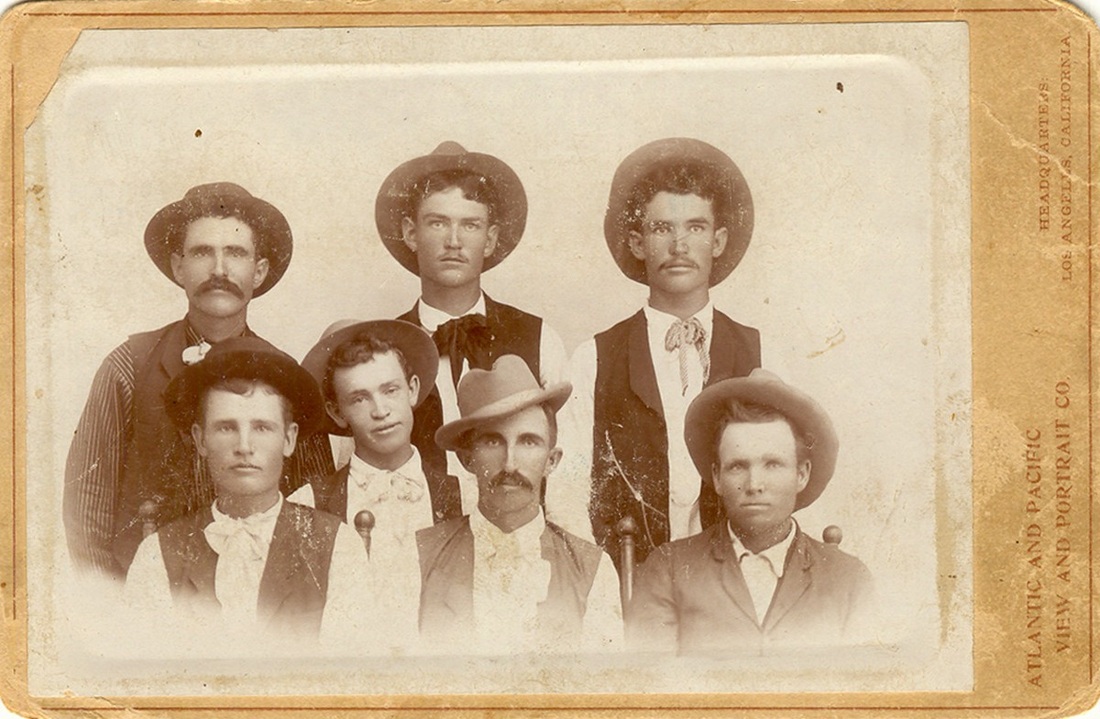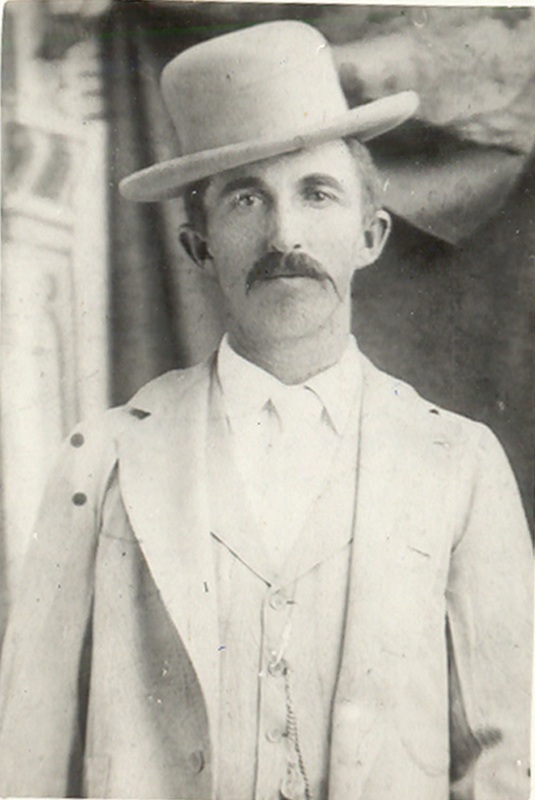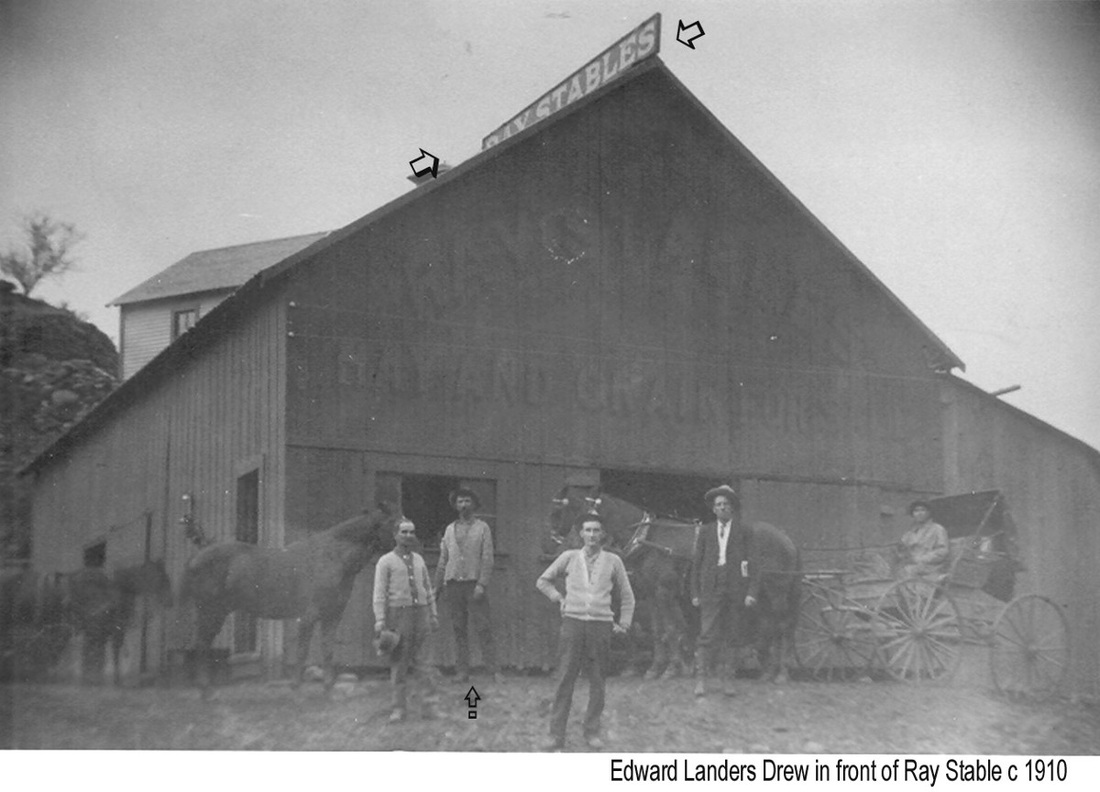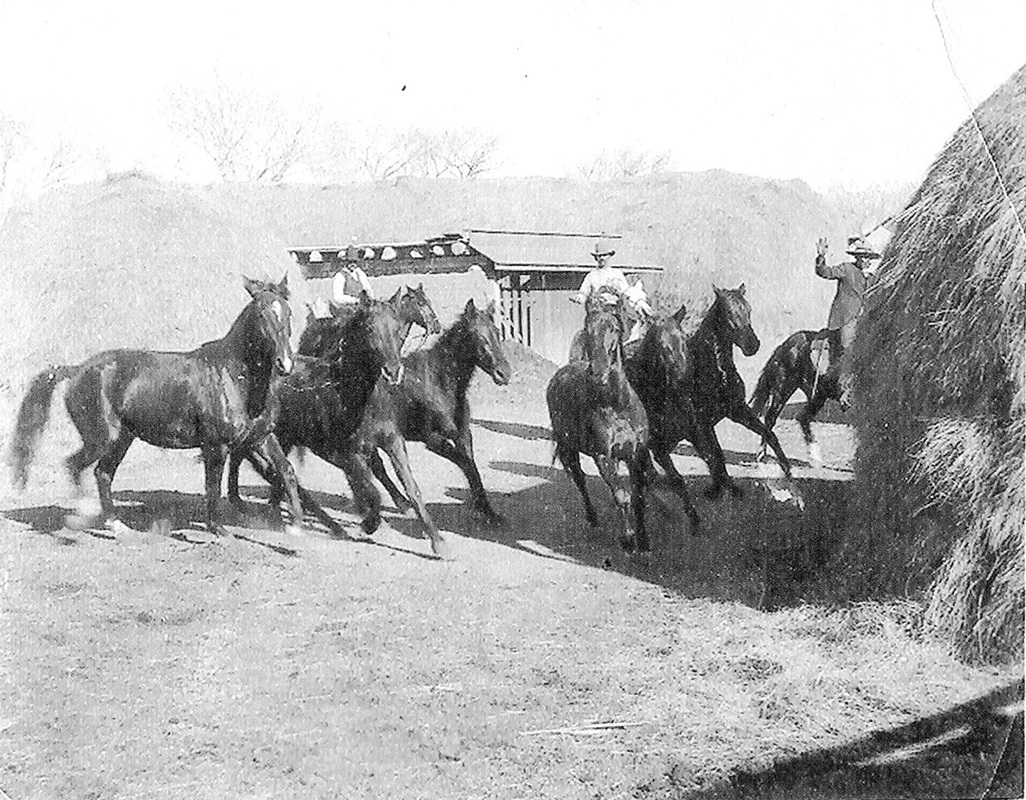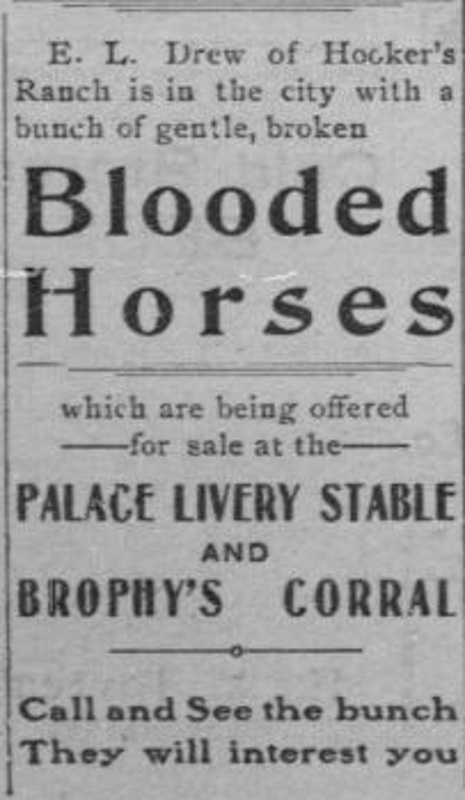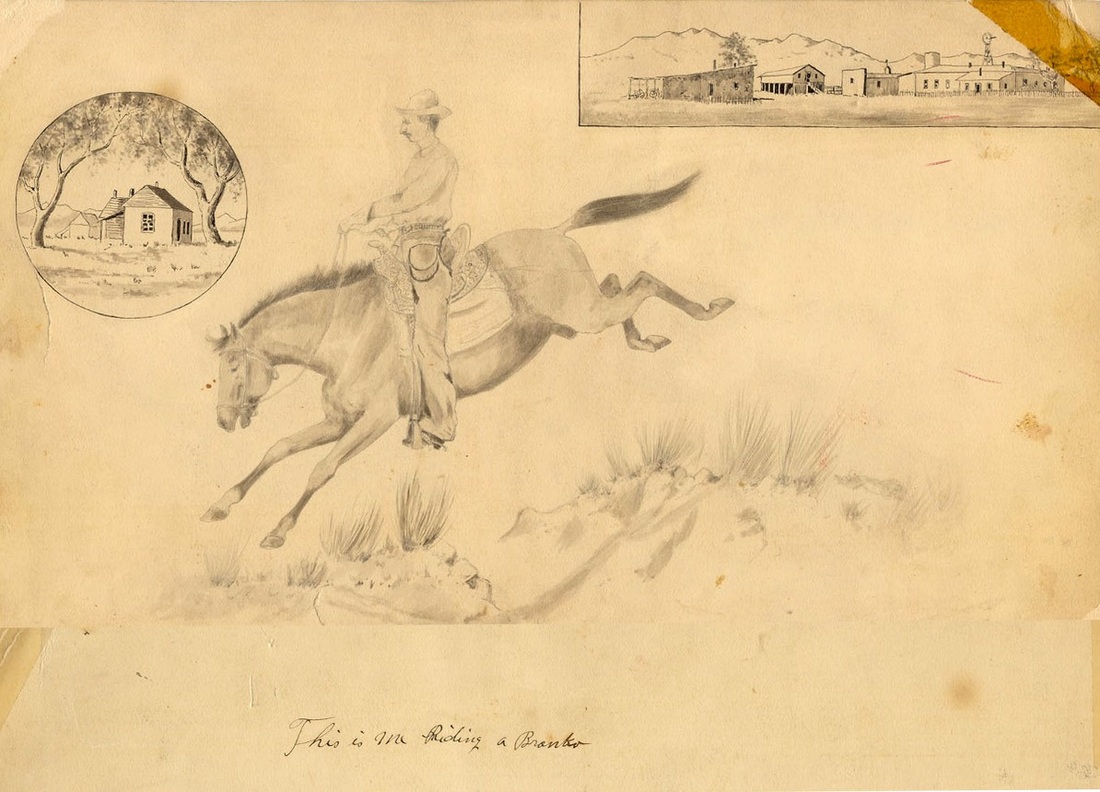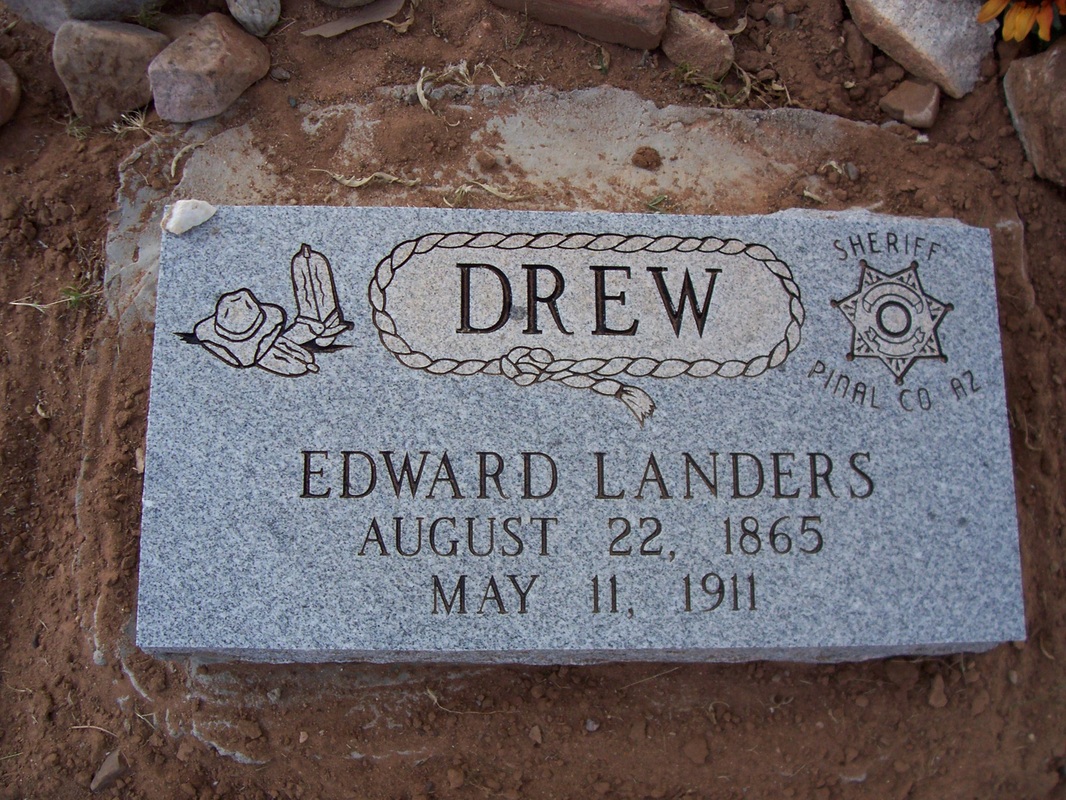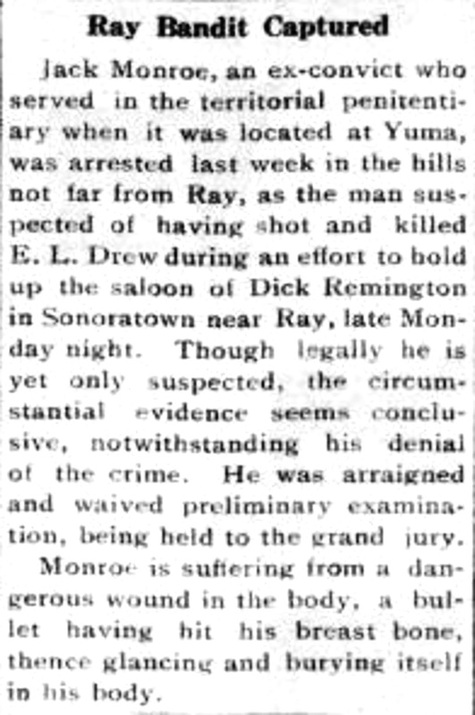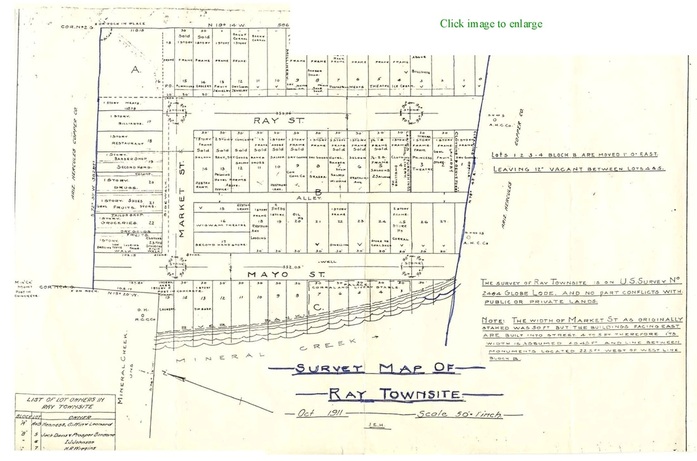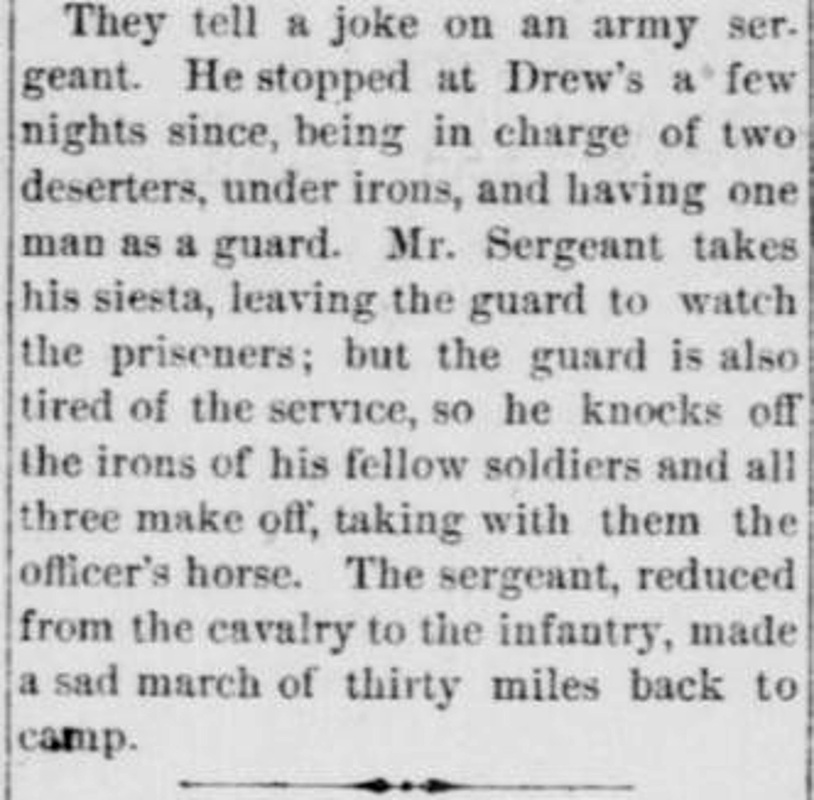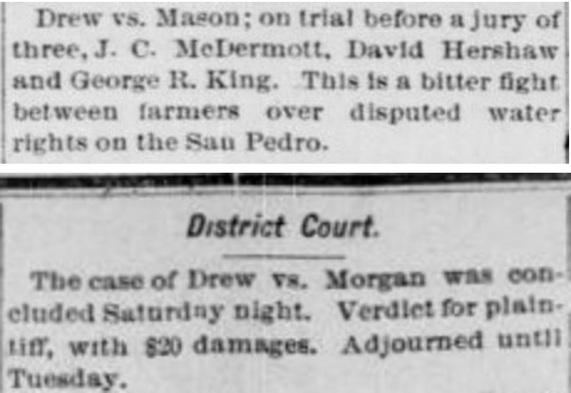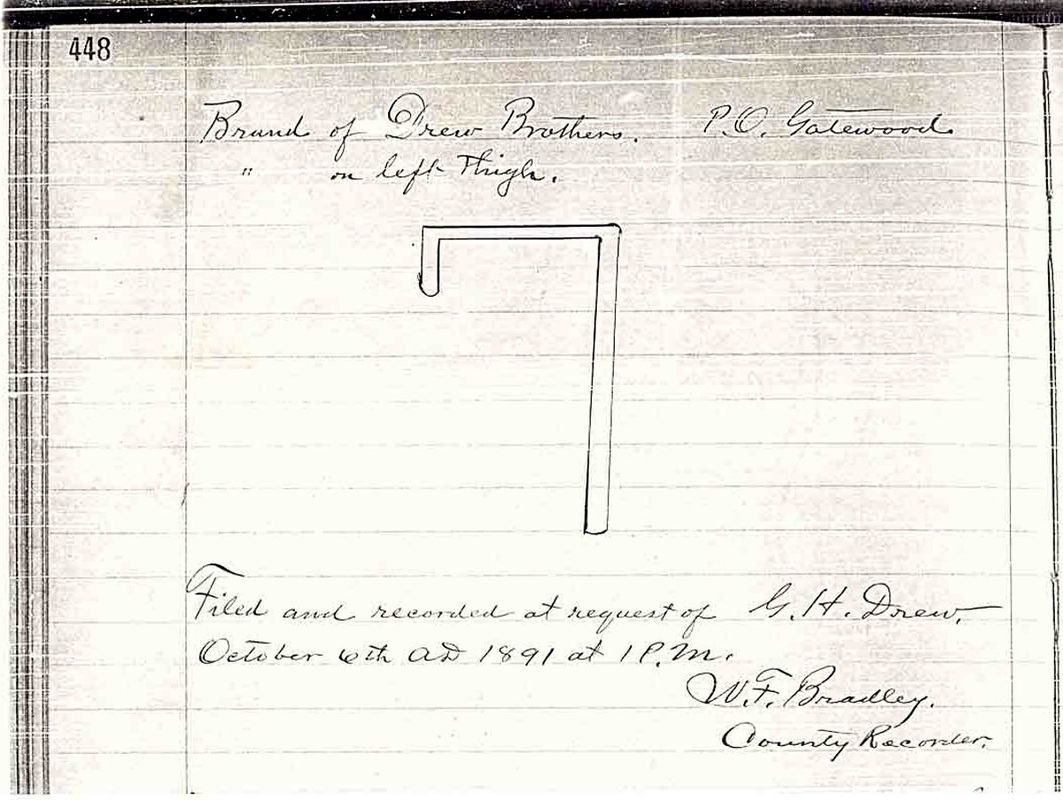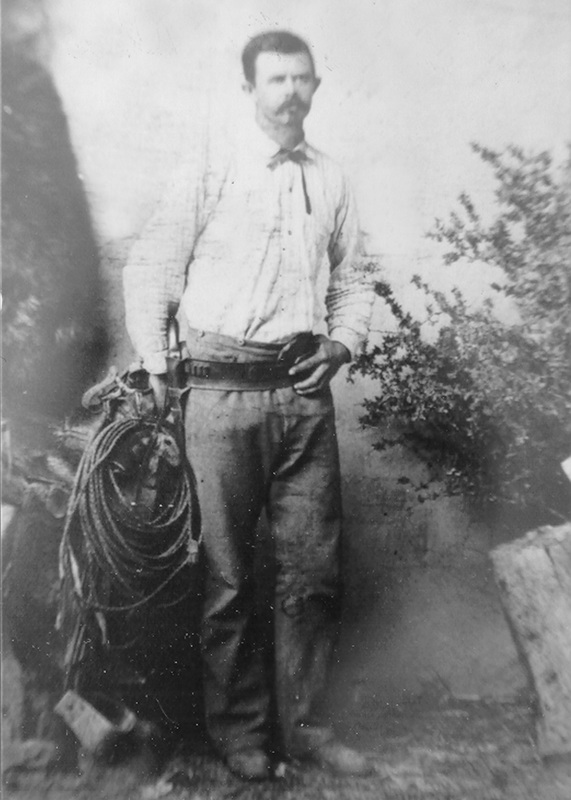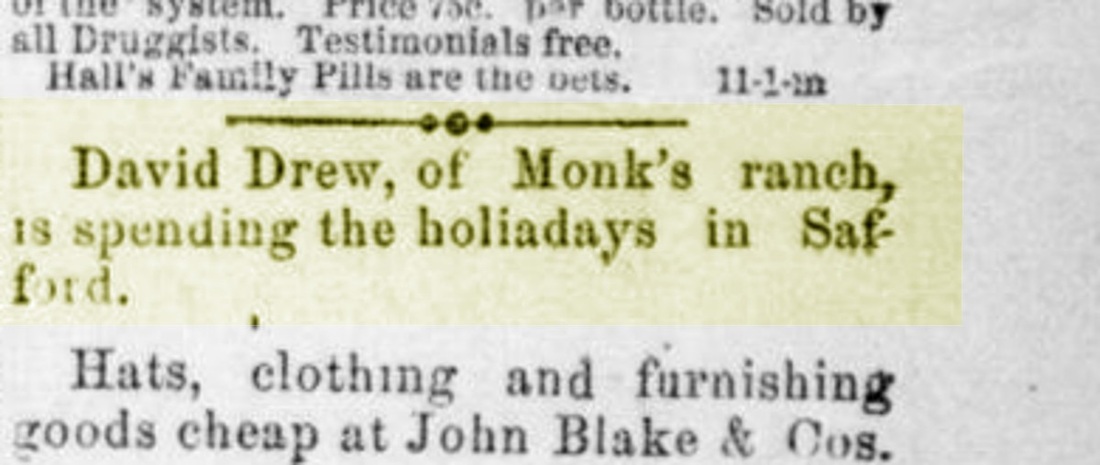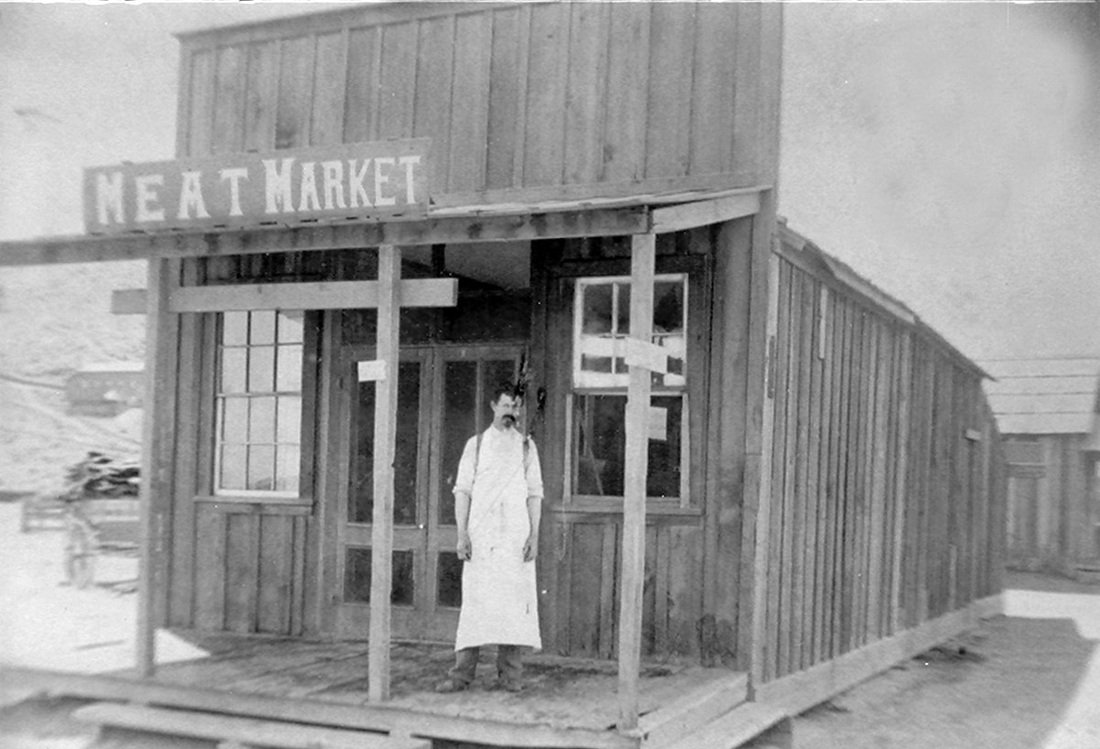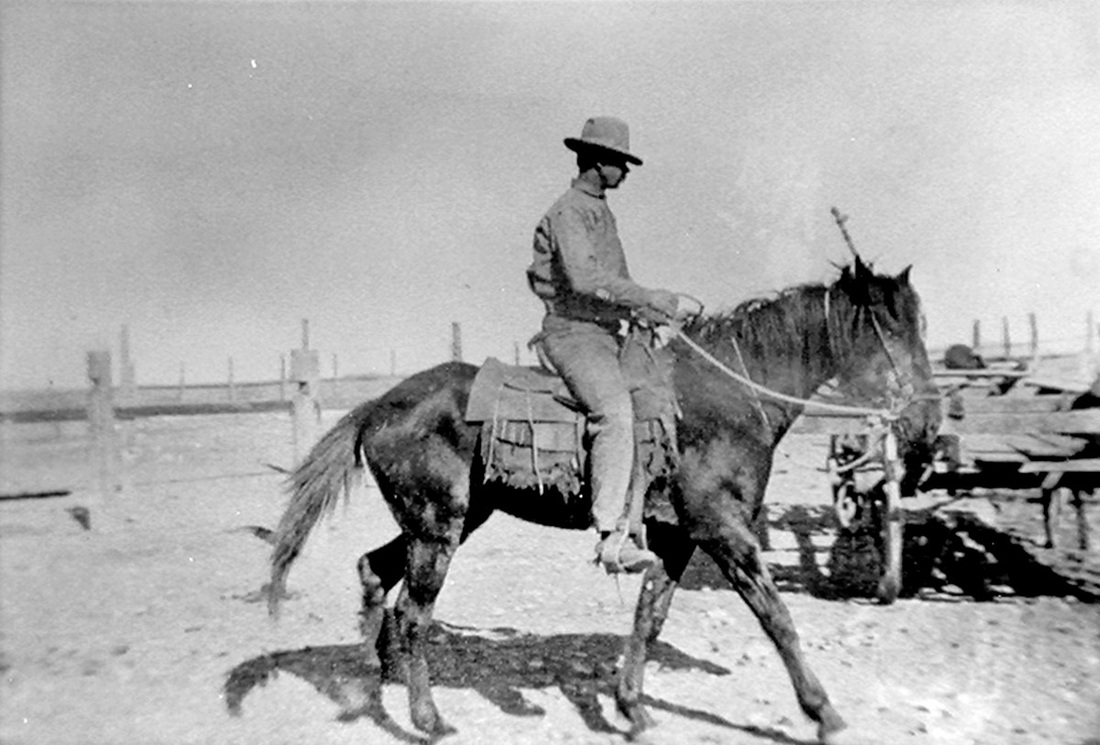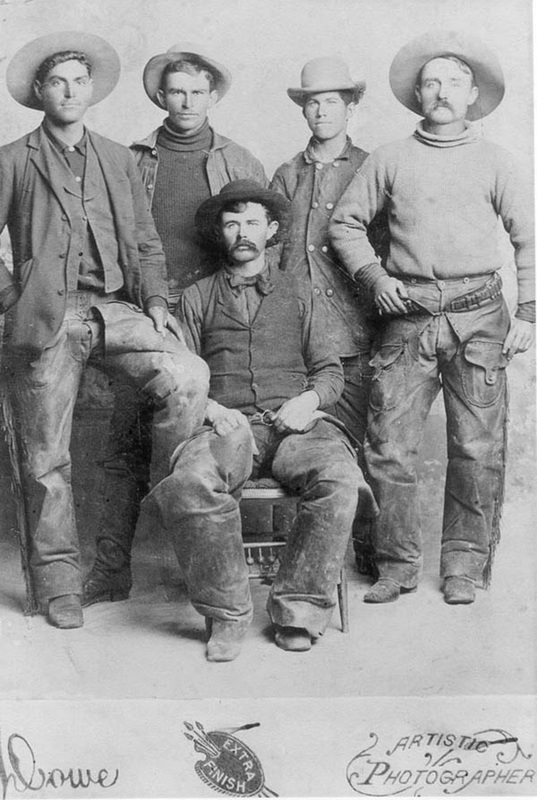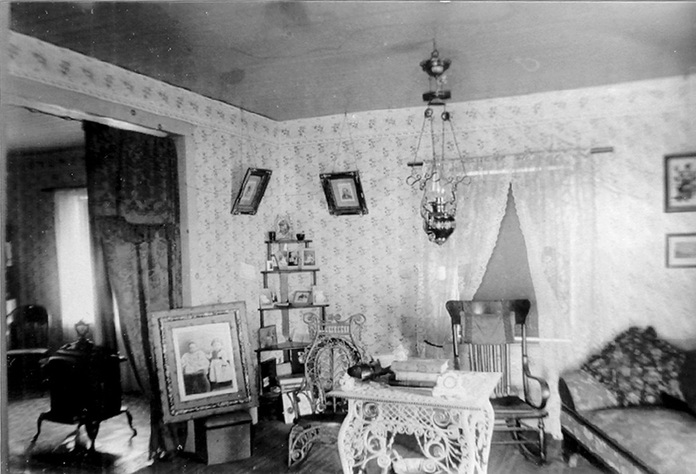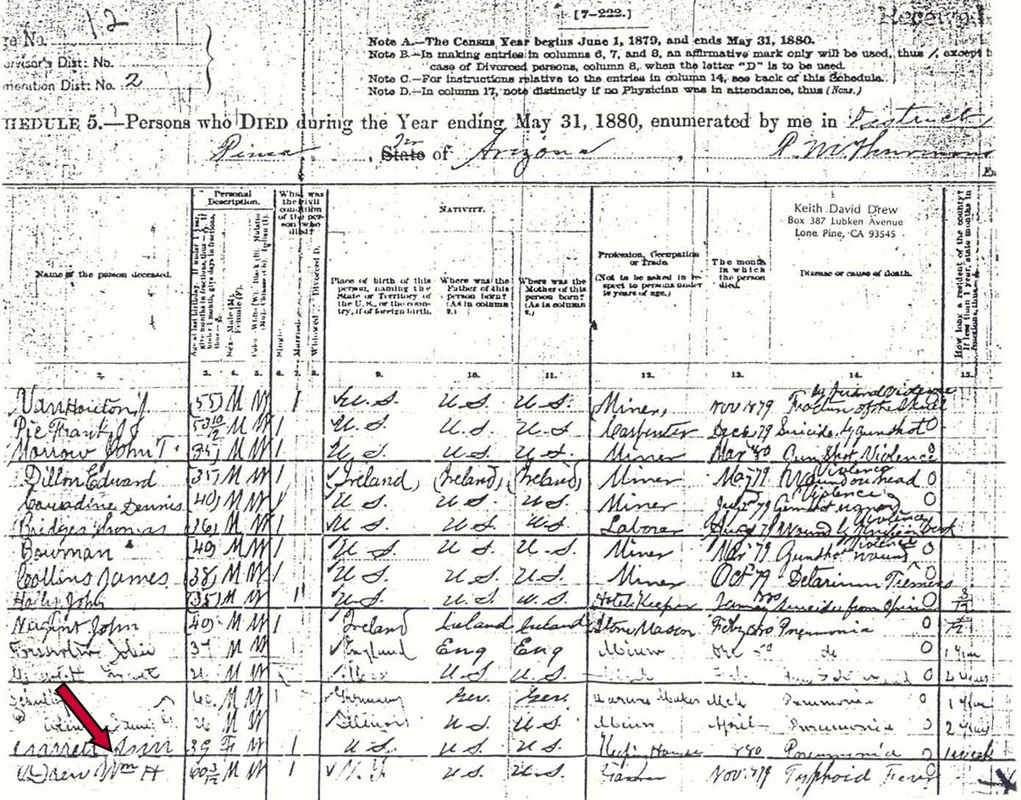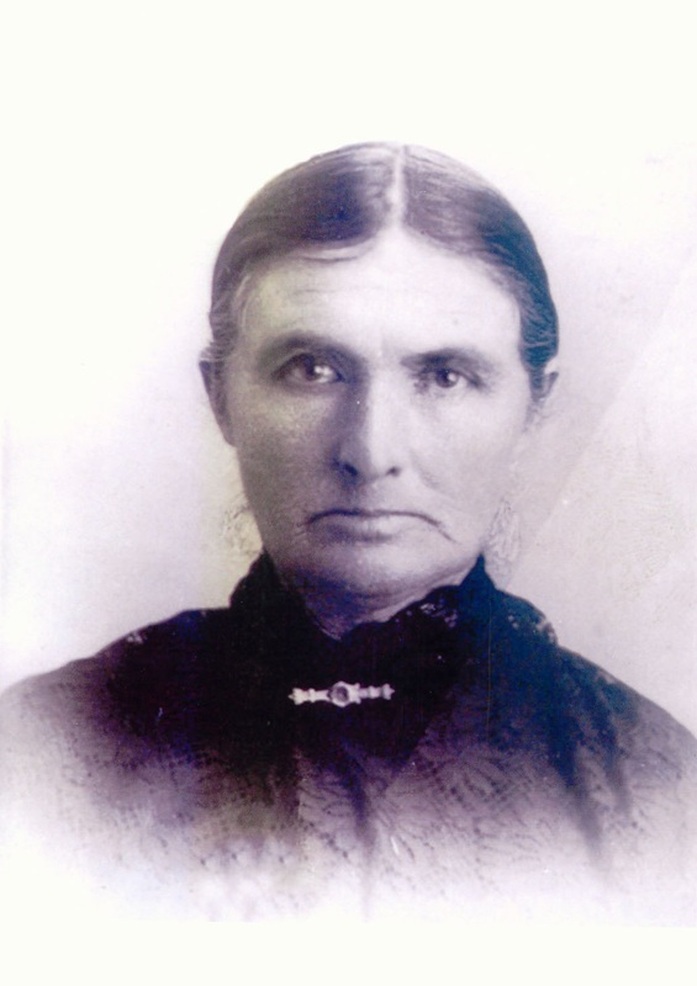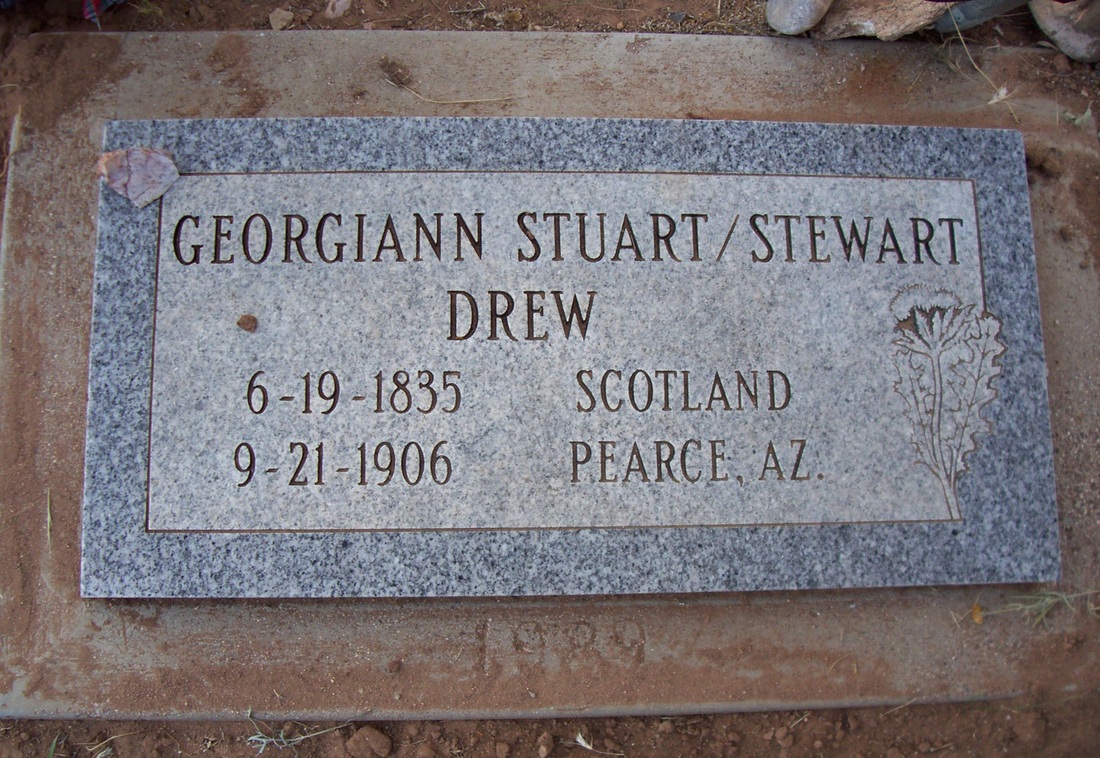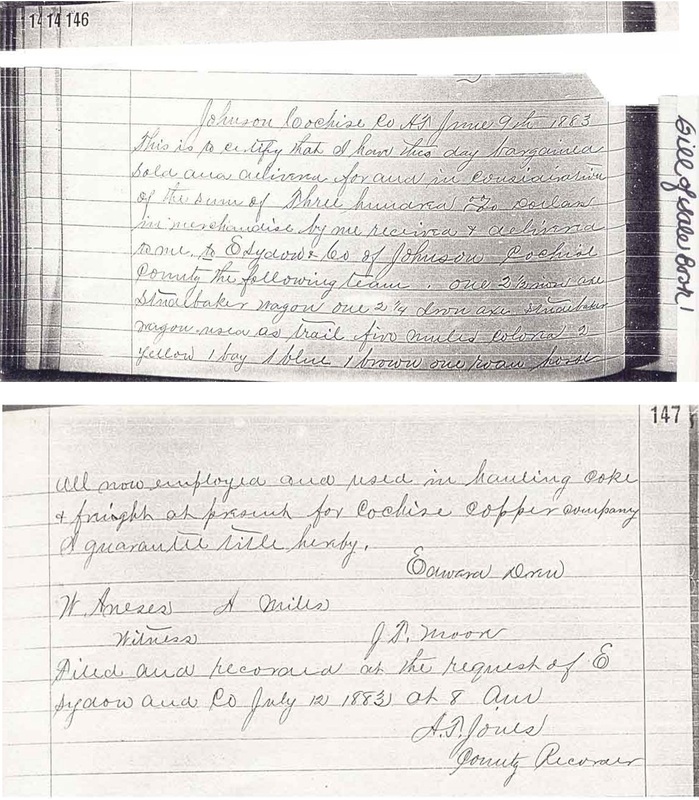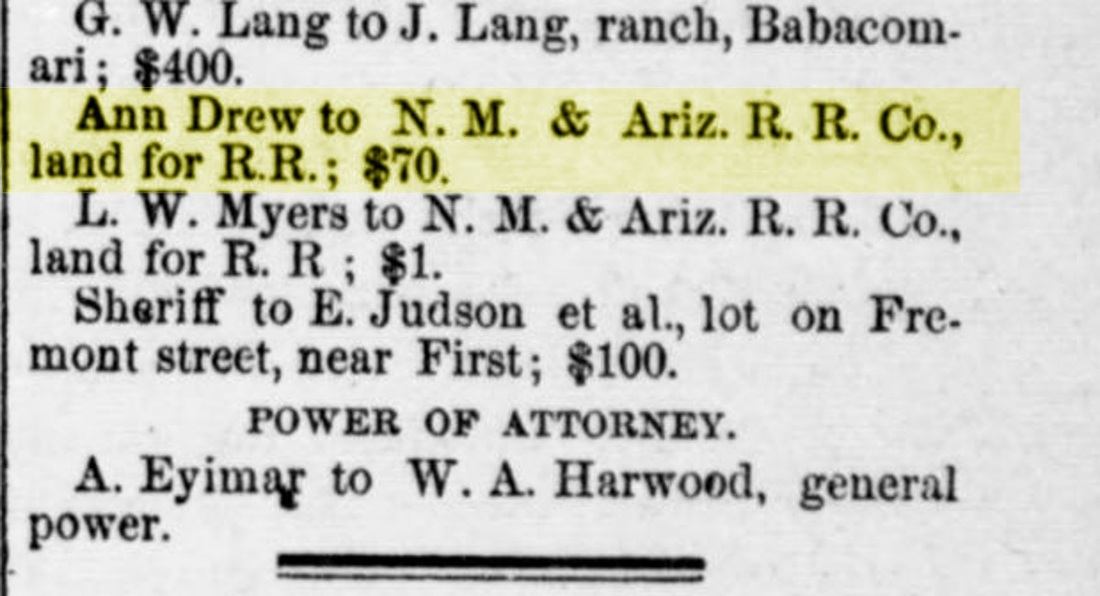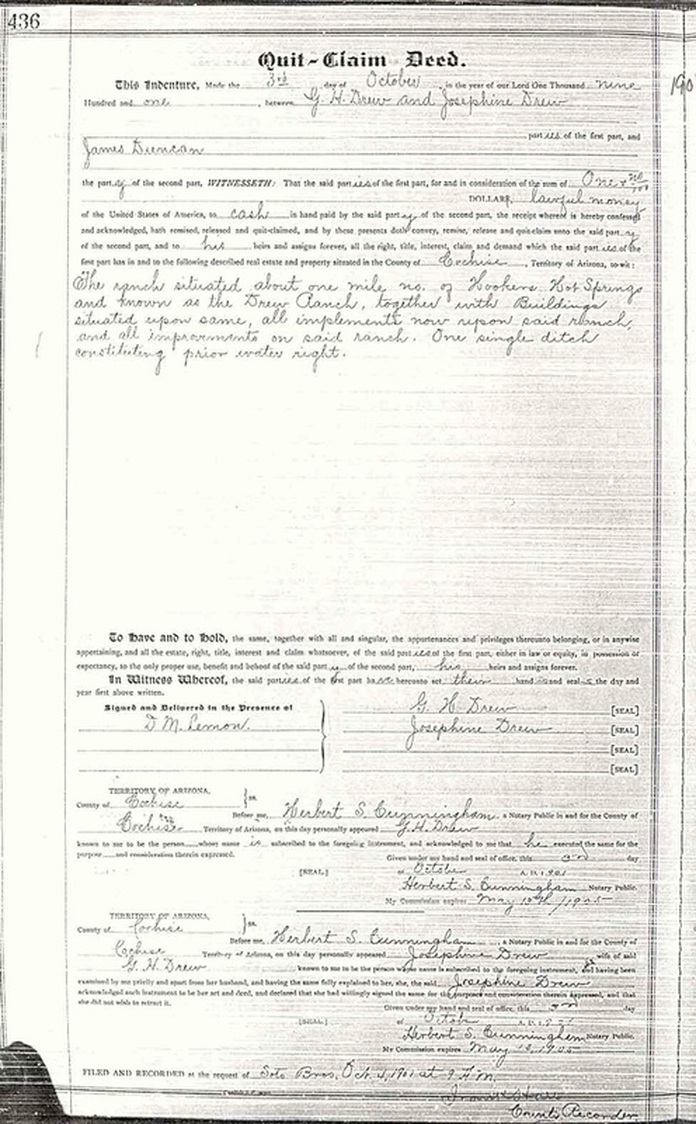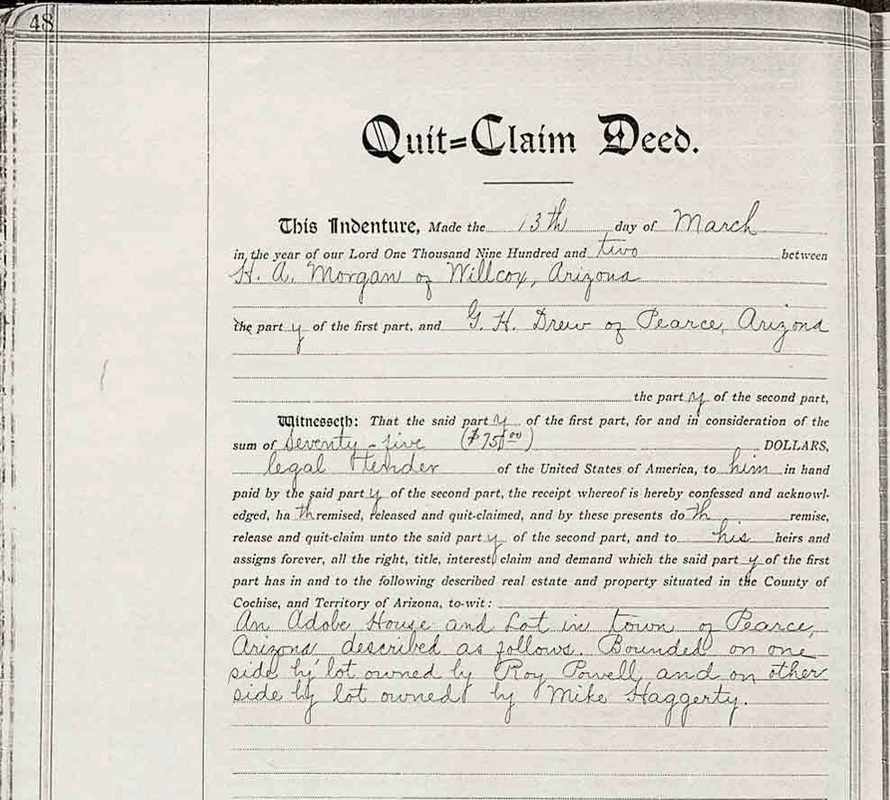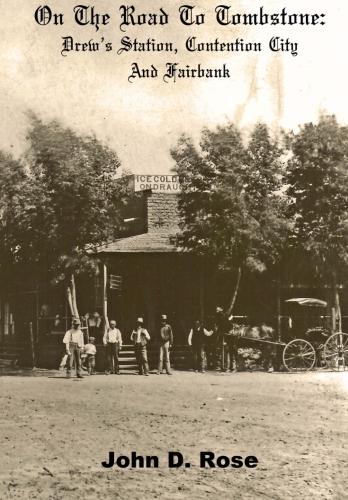Drew Family Scrapbook
By John D. Rose
THE DREW FAMILY SCRAPBOOK AND ARCHIVE.
The first publication to conclusively prove the exact location of Drew's Station was "On the Road to Tombstone: Drew's Station, Contention City, and Fairbank," by John D. Rose. This article is excerpted from that book.
Since I published the first three Drew's Station articles on WyattEarpExplorers, I have had the honor of coming into contact with the Drew family of the 21st Century, whose ancestors built and
lived in that very memorable adobe Stage Coach stop in the Arizona Desert, Drew's Station. The Drew family of today have been so generous with their personal information, and their family archive, that I wish to thank them publicly for this. In particular the Drew family of today could not have been nicer or more helpful to me. After reading my three related articles on WyattEarpExplorers, "Drew's Station, Life at Drew's Station/Ranch," and the breakthrough article "New Drew's?" they were kind enough to send me scans of their families images and history, without having been asked to do so. The New Drew's article was of particular importance as it totally debunked the false claim that Drew's Station was farther to the north than it really is, that is clearly not Drew's Station, but a site now known as the TTR/Sosa site. It is with the Drew's family blessing that I now publish these items for the first time ever, and I have utilized their family records and dates in the article below. The Drew family have shown such a devotion to their forebearers that their example is informative for us all, especially for those whose families lived through and were part of such remarkable times in the American West.
-John Rose.
Ed Landers Drew
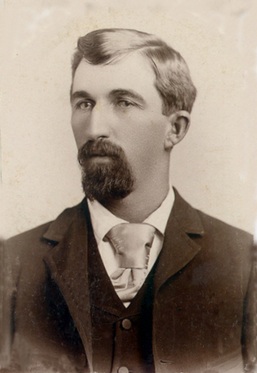
A portrait of Ed Landers Drew.
This is a photo, of Ed Landers Drew, who was born 22 Aug 1865 in Landers Pass Wyoming. That he was born in Landers pass, (now known as Lander Pass) which also became his middle name, causes me to speculate that perhaps his parents had yet to agree on his complete name, and their geographic surrounding at the moment of his birth settled the matter. Ed was one of two twins born that day, but his brother, Edwin Crawford Drew died shortly thereafter. This information comes from the Drew family, who add that this birthdate semi-confirmed by censuses in 1865 Wyoming. Ed was just fifteen when he heard shots not far from his home Drew's Station, on the evening of March 15th, 1881. He quickly mounted and rode a horse to a nearby wash just to the south, and may have been the first eye witness (outside of his murders) to view the remains of Bud Philpot. Continuing south from the wash young Ed, or Eddie, as some knew him them, reached the home of T.W. Ayles, a cattleman
and butcher in Contention City who was at that very moment writing a letter to the Tombstone Epitaph complaining about lawlessness. "Right here I am stopped by the entrance of a messenger who reports that the down coach from Tombstone to-night, and which passed here a 8 p.m., had been shot into and 'Bud,' the driver is now lying on the roadside, dead, with his whip alongside of him. And just now Eddie Drew, a young son of the station keeper at Drew's Station, informs me that he saw the dead man and recognized him as 'Bud,' the
driver of the coach."
Ed (Eddie) Drew recognized Bud Philpot as he had traveled many times through the Drew Ranch and stopped at their well-known station, more so before the building of Contention City. It had to have been a moment from his formative years that he never forgot. Seeing such a blatant act of senseless violence may have eventually led him to devote part of his adult life to law enforcement and the protection of the innocent. It is indeed a sad irony that this decision would eventually cost him his own life, decades before his time. We now pay tribute to his sacrifice, and that of the Drew Family, present and past, by publishing his and other pictures that they have supplied us with, at this time. -John Rose
and butcher in Contention City who was at that very moment writing a letter to the Tombstone Epitaph complaining about lawlessness. "Right here I am stopped by the entrance of a messenger who reports that the down coach from Tombstone to-night, and which passed here a 8 p.m., had been shot into and 'Bud,' the driver is now lying on the roadside, dead, with his whip alongside of him. And just now Eddie Drew, a young son of the station keeper at Drew's Station, informs me that he saw the dead man and recognized him as 'Bud,' the
driver of the coach."
Ed (Eddie) Drew recognized Bud Philpot as he had traveled many times through the Drew Ranch and stopped at their well-known station, more so before the building of Contention City. It had to have been a moment from his formative years that he never forgot. Seeing such a blatant act of senseless violence may have eventually led him to devote part of his adult life to law enforcement and the protection of the innocent. It is indeed a sad irony that this decision would eventually cost him his own life, decades before his time. We now pay tribute to his sacrifice, and that of the Drew Family, present and past, by publishing his and other pictures that they have supplied us with, at this time. -John Rose
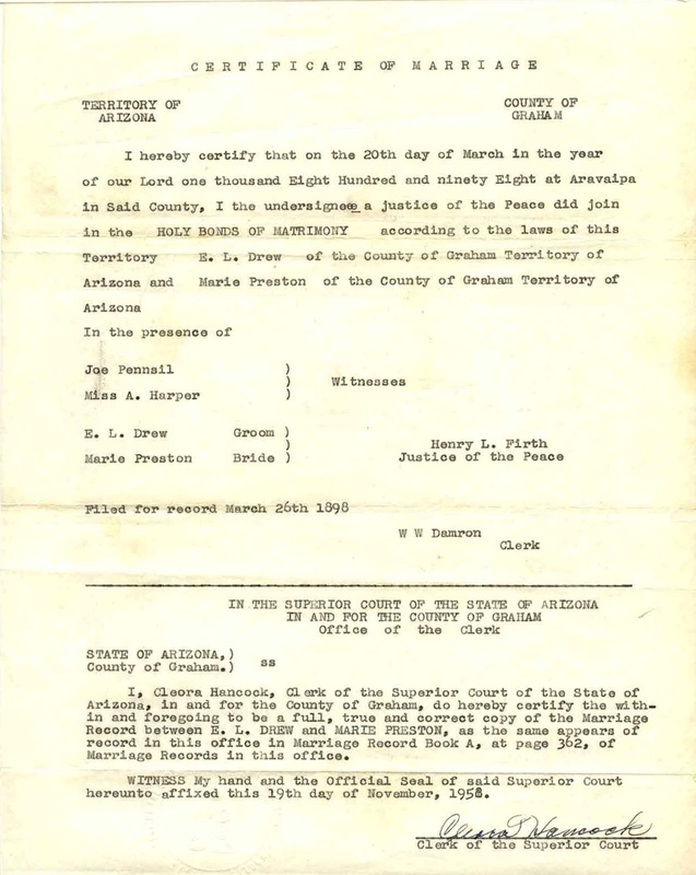
March just seemed to be a month for major events in the life of Ed Drew, good and bad. At the age of 15, on March 15th, 1881, he heard the shots that killed Bud Philpot in a wash just south of his Drew's Station home. Moments later he would view the remains of Philpot, whom he had personally known, which would make an impression on the memory of anyone, especially when but a teenager. Eighteen years and five days later, on March 20th 1898, Ed was thirty three when he married Marie Preston of Graham County. Their union would end tragically thirteen years later when Ed was shot down in the line of duty as a Pinal County Sheriff's Deputy. Ed left behind his wife of thirteen years, his eldest daughter who was just twelve, another daughter who was ten, and his son who was seven years old. The newspaper article covering his death offers his date of birth on August 22nd,1864, which differs from the family record which sets his birth one year after, August 22nd, 1865. The families research is what we are citing here as the most authoritative.
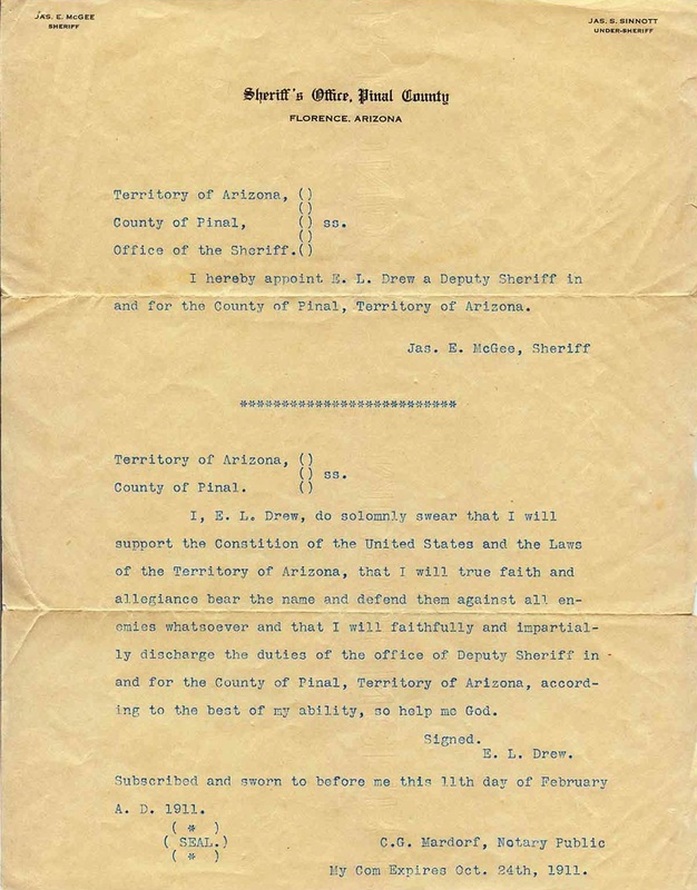
On February 11th, 1911 Ed Drew accepts an appointment as a Pinal County
Sheriff's deputy, three decades after he discovered Bud Philpot's
remains after he was murdered in a wash just south of Drew's boyhood
home of Drew's Station. This acceptance of this noble position in law
enforcement would soon end in tragedy.
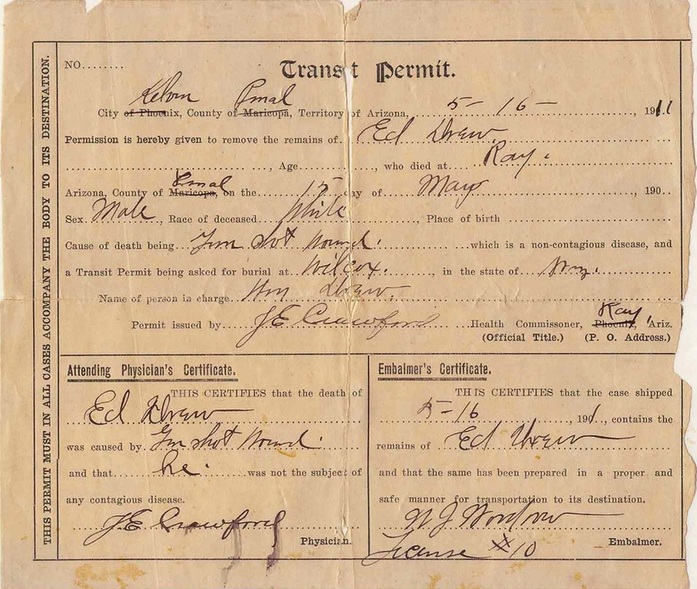
On May 15th, 1911, Deputy Sheriff Ed Drew was murdered in the line of
duty in Ray Arizona, less than 100 days after he had accepted the very
appointment which inadvertently led to his death. This transit permit
documents not only his death, but the removal of his remains to
Wilcox for burial, which was closer to the Sierra Bonita and the times
he had spent there in his younger days.
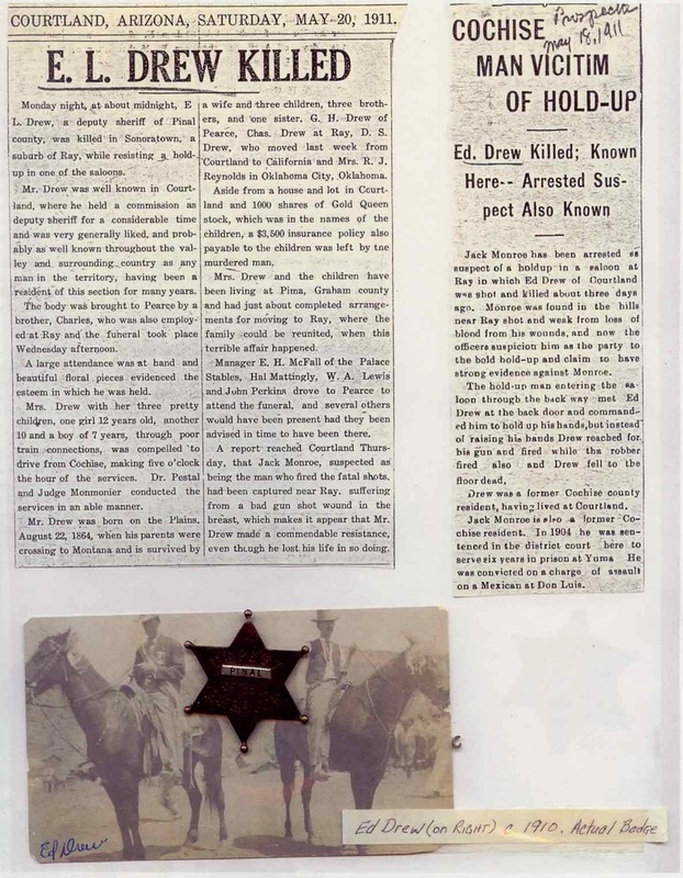
Newspaper coverage of the tragedy of Ed Drew's murder continued. This article notes that Judge Monmonier assisted in conducting the funeral service. "Billy" Monmonier was an early arrival in Tombstone, a painter by profession who plied his trade on the San Jose House, as well as Sandy Bob Crouch's stage coach, and who later took a correspondence school course becoming a judge, and later a politician, who like the Drew family, was no fan of the Earp's. However, he did share a mutual friend with the Earp's, one Fred Dodge. Monmonier had left Tombstone for
Pearce in the 1890's, and Ed Drew had left Pearce for Ray Arizona (and was killed in a nearby suburb of Ray known as Sonoratown) It may be that Judge Monmonier and Ed Drew had become acquainted in Pearce, or perhaps even earlier during Ed's time as a as a teenager at Drew's Station. In a moving visual, the Drew family placed Ed's badge over the article which was his when he was shot down in cold blood.
**********************************************************
Cora Drew
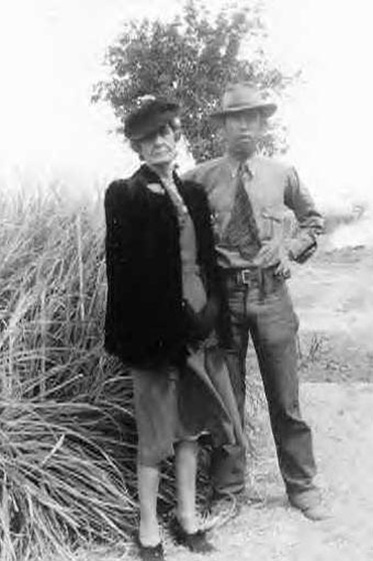
Cora and Glenn Drew c. 1940
A photo showing two generations of the Drew Family. Cora in her elder years, having been a child at Drew's Station when Bud Philpot was killed in March of 1881,
and Glenn Drew from the next generation of the drew family.
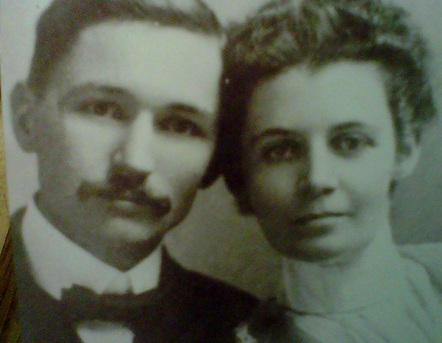
When writing of the very beginnings of Drew's Station, Cora Drew Reynolds later recalled that "Father and my oldest brother, Harrison-who was around eighteen-with the help of two Mexicans, built a three-room adobe house. It had dirt floors and doors made of logs with thick canvas covering the window openings." Such were the humble beginnings of a key location in the story of
Tombstone, the Earp's and the American West. George Harrison was born September
9th, 1858, in Madison and married Josephine Contreras July Fourth, 1893, in Tucson. His son, Lester, is pictured here with his wife, Mary Ramona, as the two pose for a unusually affectionate portrait given what was typically a more formal time.
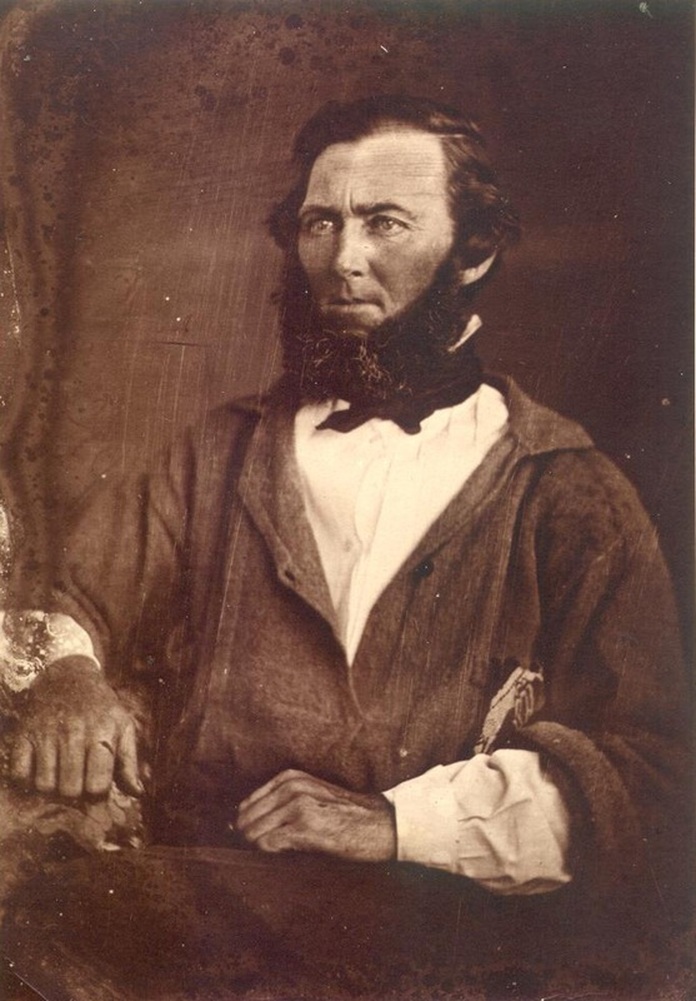
It was William Henry Harrison Drew, who brought his family to the Arizona Territory, and then to a remote location on a dusty roadway leading to a fledgling mining camp known as Tombstone. He couldn't possibly had any idea of the events to come, though he did learn first hand that this local was not always going to be the safest one. His death would leave his family to go on without him, with most of his children still in there formative years at the time of his passing. His children would learn from at least one incident that their father was not one to be trifled with, even when out gunned. In this related article, the elder Drew was shot at, and once the shot missed, he was able to instruct his assailant in a lesson of frontier manners with the business end of a shovel.
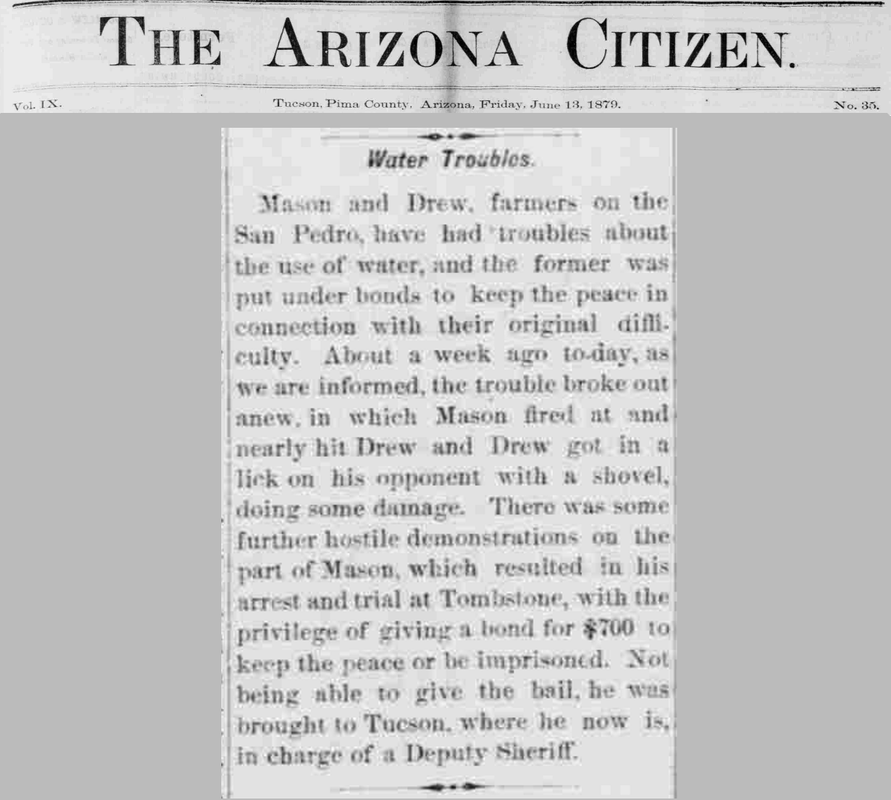
The elder Drew proved resourceful, even when outgunned. A neighboring
farmer of Drew's, by the name of Mason, disputed water rights with Drew,
resorting to violence when he didn't get his way. Given he had a gun
with him at the time, Mason may be reasonably assumed that he would have
the advantage in the confrontation, as Drew had but a shovel in hand.
Such was not to be the case. More than one flair up between these two
led to the following report in the Tucson Citizen, June 13th, 1879.
David Stuart Drew
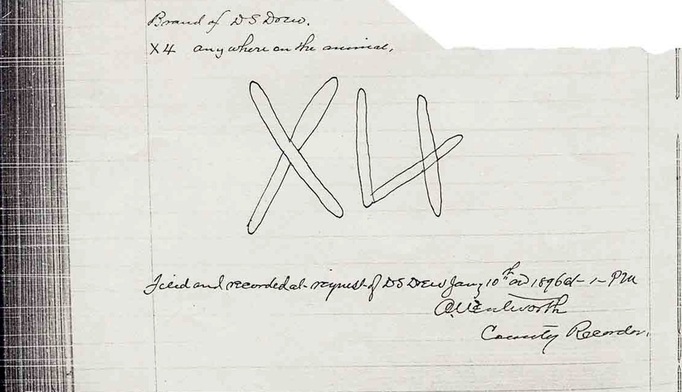
David Stuart Drew would choose this for his brand...
**********************************************************************************
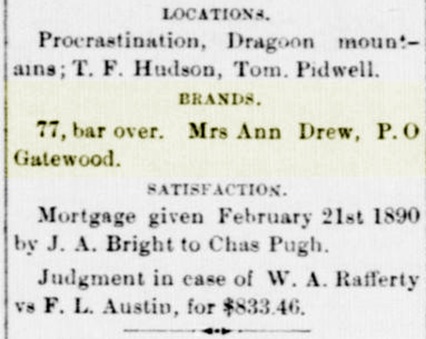
Ann Drew, survivor of her husbands loss continued on in the cattle
business, registering this brand in 1891. According to her daughter
Cora, "Desperadoes frequently came to our place," but gave their word to
her mother that their cattle would not be disturbed. Ironically, many of
those whom Cora named, such as Ike and Billy Clanton, Jim Crane and
Curly Bill Brocius, among others were long dead by the time this brand
was filed for. February 27, 1891 Tombstone Prospector
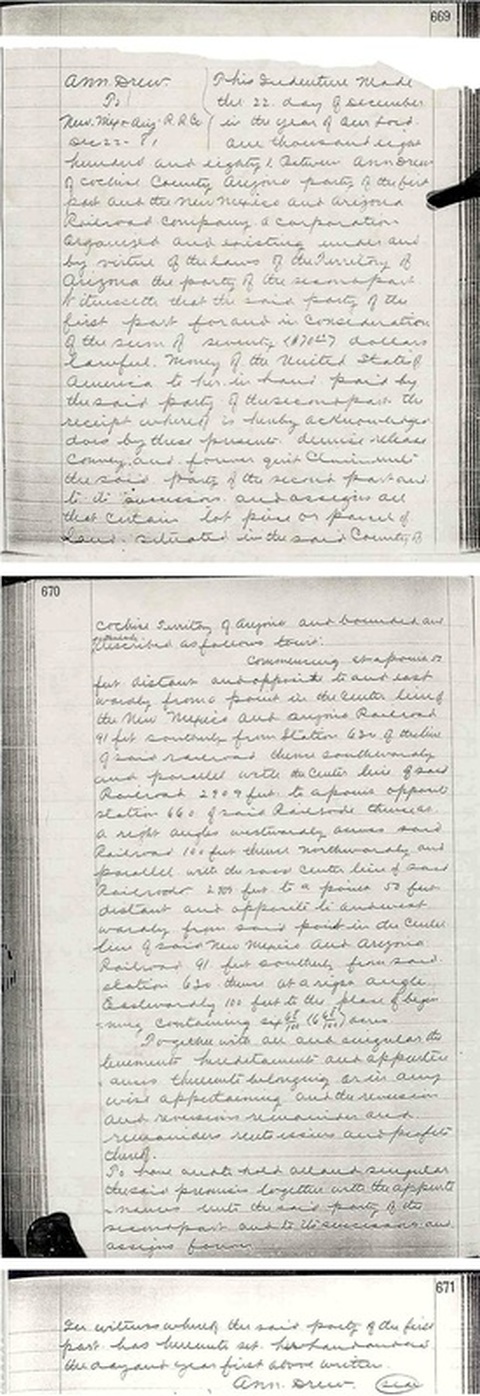
Click on the document for a clearer copy.
Following her husband's death, Ann Drew was approached by the New Mexico and Arizona Railroad, aka, the N.M. & A, for an easement across her property. (For more on the N.M. & A rr, please see our article entitled (Contention City and its Mills.) On December 22nd, 1881, she would grant such an easement. Readers of this document will note that the word station is used, but this has caused confusion for those who do not understand 19th Century surveying terminology. The word station, as its used in Railroad and other surveys, refers to a number of survey points along the line, which are used as marking points to aid in the process of surveying (not RR stations or stops). It has NOTHING to do with the fact the Drew's Station was in the area of where this survey was conducted
The above information is in part excerpted from On the Road to Tombstone, by John D. Rose, published in 2012. This is the first book devoted in great detail to Fairbank, Contention City, and legendary Drew’s Station, but also offering an in depth view of the importance of Tres Alamos as an early transportation hub in the wilds of the Arizona Territory. For more on this story and other research breakthroughs, this book is available at https://www.createspace.com/3952635 as well as Amazon.com.
Oct. 30,2011 Copyright 2012, 2013, 2014, 2015, 2016, 2017, 2018. John D. Rose all rights reserved.
